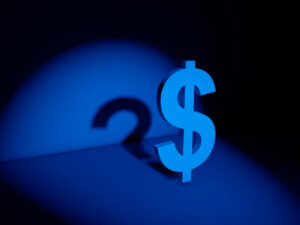The Dollar During Trump 2.0 – A New Plaza Accord or Intervention Central?
Posted by Colin Lambert. Last updated: January 20, 2025
What does a second Trump term mean for FX markets? Eva Szalay has been checking on the thoughts of market analysts.
President Donald Trump’s return to office sets the stage for deja vu in foreign exchange markets. The last time around Trump was verbal about the strength of the US currency with his frequent tweets spurring a wave of speculation about whether he could force the Treasury to intervene to weaken the dollar.
The rerun of the Trump President movie could hold much of the same – this time around the dollar is even stronger than it was at the swearing in ceremony in 2017, setting-up an interesting start to Trump 2.0. In 2025, the dollar is about 6% higher against the Chinese renminbi, it’s up 8% on an index basis against a basket of peers and the euro is worth 4% less against its US counterpart than at the last swearing in ceremony. Despite two rate cuts from the Federal Reserve in 2024, the greenback continued to lift higher.
This time analysts are wondering if the strength of the US currency will push countries to come to a Plaza accord-style agreement or whether unilateral efforts from central banks might be the way to temper the dollar’s march? The spectre of tariffs is also looming large for markets, complicating the picture and suggesting more volatility ahead in currency markets and making the return of intervention speculation a possibility.
Paul Mackel, global head of FX research at HSBC Global Banking and Markets, and his team say there will be no let-up for the dollar’s upward march, which will have a wide-reaching impact. “To us, the strong USD message can sound like a broken record but it is not one that should tire. US policy uncertainty, relatively higher yields and sluggish global growth puts the USD at the top of the playlist,” Mackel says.
Even with a rapidly weakening Chinese renminbi, however, it’s unlikely that nations will gather around to agree on measures to rein-in the dollar’s upwards march, like they did in 1985. “Another Plaza Accord seems a lot less feasible given how much FX markets have grown since, among other reasons. But the PBOC will likely smooth the pace of the RMB’s depreciation,” Mackel observes.
Mary Park Durham, a research analyst at JP Morgan Asset Management, notes that measured on a real effective exchange rate basis the dollar is near all-time highs, when adjusted for inflation. Added to this, the gap between US 10-year Treasury yields and those of the country’s key trading partners has opened to its widest since 1994.
Analysts at Capital Economics agree and expect the dollar to appreciate “a bit further in 2025” due to the US economy and its stock market outperforming others, as well as Trump’s widely-anticipated tariffs, but the idea of a multilateral agreement seems far off. “Our judgement is that Trump will enact a 10% universal tariff and 60% on imports from China soon after his inauguration, which does not appear to be fully discounted by market participants,” the Capital Economics team say.
“The strong USD message can sound like a broken record but it is not one that should tire”
Together with continued US outperformance and more disappointments about European growth and the impact of Chinese stimulus measures, the team, led by deputy chief market economist Jonas Golterman, says that the DXY will near its 2022 peak around 110. “That might prompt more talk of a Plaza 2.0/Mar-a-Lago Accord, but we think that idea remains far-fetched,” Golterman says.
Not everyone agrees, of course. Strategists regularly turn bearish on the dollar due to the size of the country’s debt pile and questions about its ability to continue financing it. But this hasn’t stopped the greenback from bucking expectations and continuing to appreciate, causing a headache for the outspoken president.
Morgan Stanley reckons that selling the dollar is the right call, joining the ranks of bearish teams citing further rate cuts from the Fed as inflation data from January sets the stage for further easing. UBS Wealth Management, meanwhile, expects the buck to have a strong first half before weakening in the last 6 months.
While undoubtedly a lot will depend on rate cuts, tariffs and the President’s penchant for controversy will also have an impact, especially as this time around the geopolitical backdrop is even more complex than before. Currencies (and the dollar in particular), have been increasingly weaponised as sanctions and other restrictions leverage the dollar’s global star power. These efforts have spurred countries like Russia and China, among others, to seek new alternatives and to create their own settlement systems as they anticipate more turbulence and restrictions around the US currency.
JP Morgan’s cross-asset strategy team, led by Fabio Bassi, notes that the Fed’s rate path will be decisive as well, with recent strong payrolls data denting the market’s hopes for further easing. The bank is sticking with its call for two cuts in 2025, with one in June and another in September, but despite this the team believes that the greenback will continue to get stronger, setting EUR/USD and USD/CNH targets at 0.99 and 7.40, respectively, in Q1 2025.
“We stick to our baseline scenario of US exceptionalism amidst additional easing, but continue to see a pivot of the Fed to a neutral and thus symmetric bias on policy rate as
the main risk for equities,” the team says. “In FX, our positive outlook on USD has continued lately but we see further upside.” They also note that going long Japanese yen is a good way to insulate against the possibility of an unexpected moderation in US data. The bank has a USD/JPY target at 151 in Q2 2025 and 148 in Q4.
For now, the market is in wait-and-see mode, but it’s shaping up to be an interesting ride. Buckle up!

